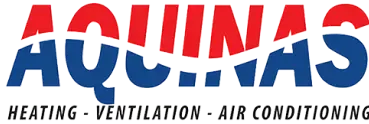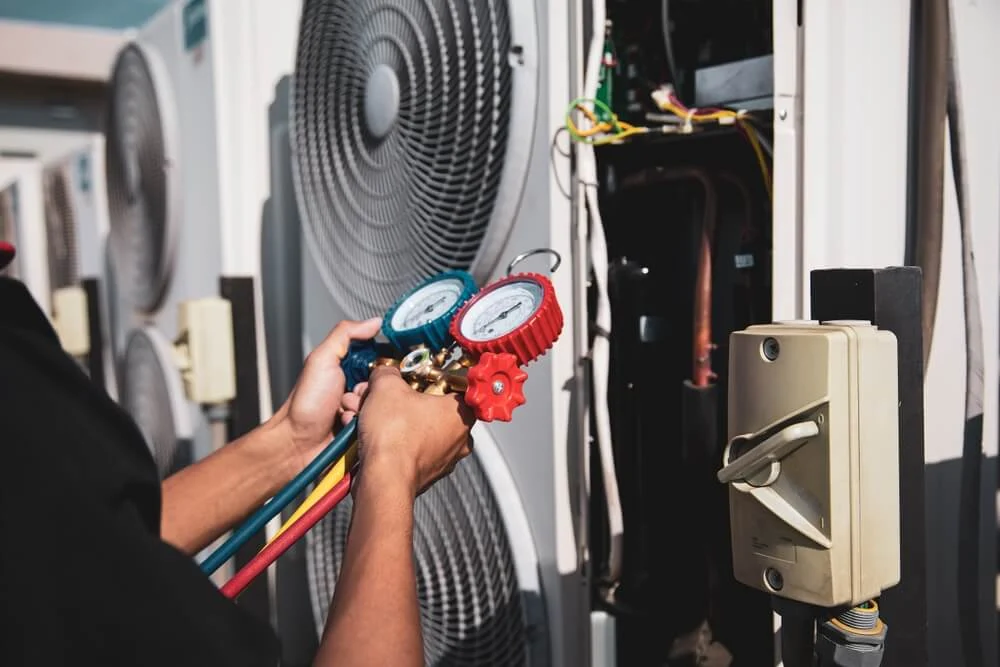HVAC Energy Efficiency: Why It Matters for Your Building’s Bottom Line
Heating, ventilation, and air conditioning (HVAC) systems are responsible for approximately 35% of a commercial building’s total energy use, according to the U.S. Department of Energy. With energy prices rising across California, HVAC energy efficiency has become a top priority for commercial building owners and property managers looking to reduce costs and improve system performance.
Beyond utility savings, energy-efficient HVAC systems support long-term asset management by reducing equipment strain, lowering maintenance needs, and improving comfort for occupants. For commercial and multi-family buildings, even modest efficiency gains can translate into thousands of dollars in annual savings.
In this post, we’ll explore how HVAC inefficiency affects operating costs, highlight key upgrades that deliver measurable returns, and examine local incentives available to California property owners. You’ll also learn how preventive maintenance and strategic planning contribute to both immediate and long-term financial performance.
The Financial Cost of Inefficient HVAC Systems
For most commercial and multi-family buildings such as large apartment complexes, energy is a top three operating expense, often exceeding $2 per square foot annually. With HVAC representing a large portion of that, inefficiencies can quietly drain thousands of dollars each year.
Common culprits include:
- Short cycling from oversized systems
- Leaky ductwork or poor insulation
- Uncalibrated thermostats and outdated controls
A case study from the U.S. Department of Energy’s Better Buildings Initiative found that one commercial property cut energy use by 30% through system optimization and equipment replacement. Similar results are reported by ENERGY STAR® and ASHRAE, especially when owners take a holistic view of building performance.
How Energy Efficiency Impacts Operating Budgets
Small efficiency improvements add up—especially across large properties, multi-unit portfolios, and mixed-use buildings.
- Utility bills: Efficient systems can reduce energy use by 20–40%, saving tens of thousands per year in larger properties.
- Maintenance: Up-to-date, well-maintained equipment experiences fewer breakdowns and lasts longer, reducing repair costs.
- Capital planning: Many HVAC upgrades pay for themselves within 3–5 years. Smart planning aligns these investments with your budget cycle.
In California, where energy demand spikes seasonally, optimized HVAC systems offer immediate and lasting budget relief.
Key HVAC Upgrades That Deliver Measurable Savings
Several modern HVAC technologies offer high ROI, both in energy savings and system longevity.
- Smart thermostats & advanced controls can save up to 30% by reducing unnecessary heating/cooling during unoccupied periods.
- Variable-speed motors & compressors allow systems to adjust output to actual demand, cutting waste and reducing wear.
- Economizers & demand-controlled ventilation (DCV) help buildings meet Title 24 requirements and reduce fresh air intake when not needed.
- High-efficiency rooftop units (RTUs) ENERGY STAR-certified models can improve performance by 15–25% over older units.
According to the California Energy Commission, buildings that adopt a combination of these upgrades often see payback periods under five years.
The Role of Preventive Maintenance in Energy Performance
Preventive maintenance is one of the most effective and affordable ways to maintain HVAC energy efficiency, extend equipment lifespan, and avoid unexpected breakdowns. Yet, it’s often the most overlooked.
When maintenance is deferred or reactive, systems gradually lose efficiency. Filters clog, coils get dirty, and refrigerant levels drift out of range. Over time, this leads to overworked equipment, higher energy bills, and costly repairs.
Consistent maintenance delivers measurable savings, typically reducing energy use by 5–15% annually, according to ENERGY STAR. It also helps avoid emergency service calls and extends the usable life of equipment, which improves long-term ROI.
Core Preventive Tasks:
- Replace air filters every 3 months (more often in dusty or high-use environments)
- Clean condenser and evaporator coils to ensure heat transfer efficiency
- Check and top off refrigerant levels to optimize cooling performance
- Inspect belts, motors, and electrical connections
- Calibrate thermostats and zone sensors for accurate readings
- Schedule biannual tune-ups: one before the cooling season, one before heating
For property managers juggling multiple tenants or large building systems, establishing a seasonal maintenance schedule is essential. It simplifies asset management and reduces the risk of downtime during peak demand seasons.
👉 Tips to Simplify HVAC Maintenance offers practical guidance on setting up a systemized approach for your building.
Preventive maintenance also plays a crucial role in workplace performance. Comfortable environments contribute to better tenant satisfaction and fewer complaints, especially in office or multi-family spaces. As explored in How HVAC Maintenance Impacts Productivity, poor temperature control and indoor air quality are linked to reduced focus and well-being.
Takeaway: A structured HVAC maintenance plan is more than a best practice. It’s a strategic asset management tool that drives efficiency, reliability, and tenant satisfaction.
Local Codes and Incentives Supporting Energy Efficiency
California’s progressive energy regulations reward proactive property managers.
- Title 24 and CALGreen set minimum efficiency requirements for HVAC design and performance.
- Utilities like PG&E, Southern California Edison (SCE), and San Diego Gas & Electric (SDG&E) offer generous rebates for:
- High-efficiency RTUs
- Smart controls
- HVAC system commissioning
- Cal Energy Commission and GoGreen Financing provide funding tools for upgrades.
Rebates can reduce upfront costs by 15–30%, helping align improvements with annual budgets.
Long-Term Benefits Beyond Energy Savings
While the primary goal is to cut costs, energy-efficient HVAC systems offer added value:
- Improved tenant comfort and retention: Consistent temperatures and better air quality boost satisfaction and reduce complaints.
- Higher property value: Efficient buildings command higher rents and have stronger appeal in competitive markets.
- Risk reduction: Fewer breakdowns and better performance tracking make long-term planning easier.
- ESG alignment: Energy-efficient systems support environmental goals and compliance for multi-family portfolios.
Unlock the Full Value of HVAC Efficiency
Commercial HVAC energy efficiency is not just an environmental win. It’s a smart financial strategy. From lower utility bills and fewer maintenance headaches to increased building value and tenant satisfaction, the return on investment is clear.
If you’re unsure about the condition or efficiency of your current HVAC system, now is the time to act. Start with a professional energy audit or schedule a seasonal tune-up to identify cost-saving opportunities.
Choosing the right partner is key. Not all contractors have experience with commercial and multi-family systems or understand California’s strict energy codes. This guide to selecting the right commercial HVAC contractor outlines what to look for—from technical qualifications to long-term service planning.
Contact Aquinas HVAC today to evaluate your systems and develop a customized energy efficiency plan that aligns with your budget, goals, and California code requirements.

